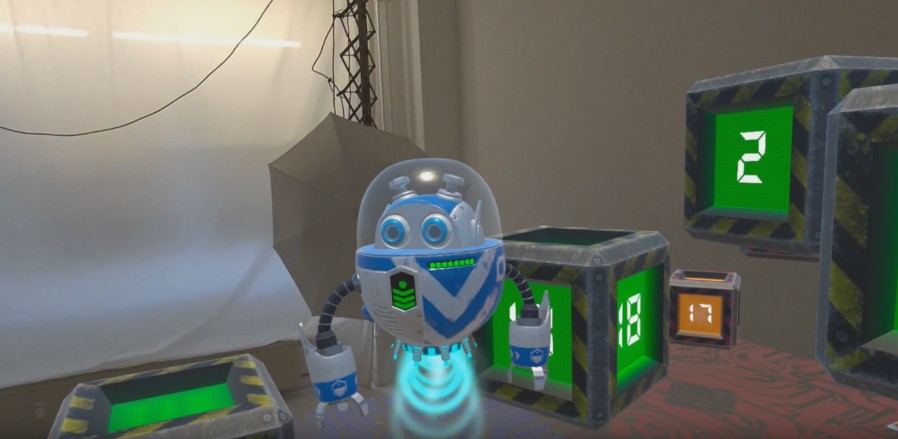Forget everything you know about VR combat. STACKAAR isn’t just another game-it’s a full-body revolution. While most Quest titles trap you in digital worlds, this one merges your reality with mechanical warfare. You don’t control a robot; you become its neural core.
Your living room transforms into a battlefield where furniture becomes tactical cover. (My coffee table saved me from a plasma blast last Tuesday-dodging behind actual furniture while digital explosions erupt around you is a rush I won’t forget.) Princeton researchers recently showed robots delivering items to VR users-STACKAAR flips that, making you the delivery system for destruction.
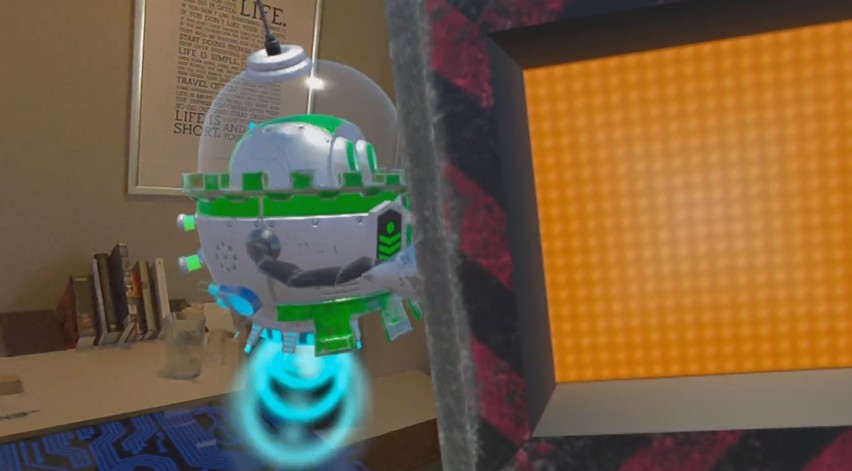
Why does this matter? Full-body control means zero motion sickness-your physical movements directly drive the action. This isn’t novelty; it’s evolution. Early playtesters burned 8.7 calories per minute during intense duels-comparable to boxing sessions. One user turned their kitchen island into a fortified command center during a 20-minute boss fight.
Where Your Living Room Becomes a War Zone
The breakthrough rides on Meta’s v78 update-enhanced passthrough APIs that make Quest 3’s mixed reality actually work for intense gameplay. No joysticks. No button combos. Your squat becomes a rocket launch; your lunge transforms into a plasma strike.
This is mixed reality pushed beyond tech demos-delivering tangible adrenaline through calculated physicality. The seamless integration of your physical space creates emergent strategies unique to your environment. By removing complex control schemes, STACKAAR eliminates the steep learning curve that prevents many from enjoying hardcore VR combat.
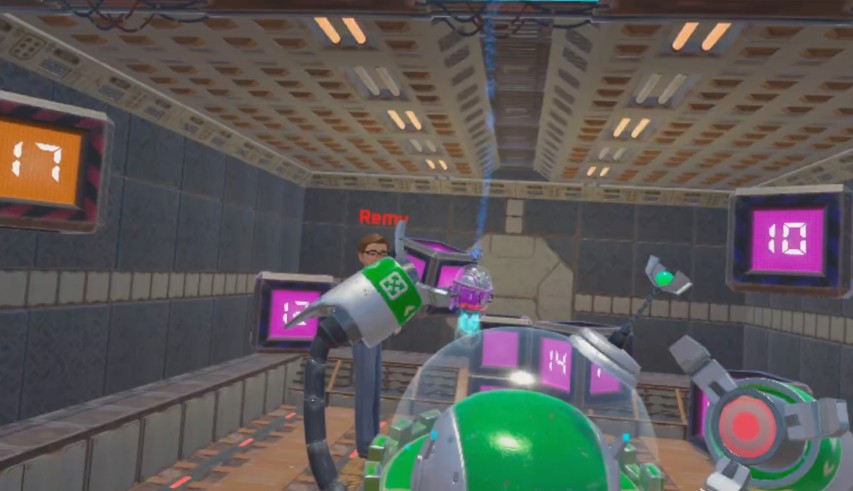
Your body is the controller-making the experience instantly intuitive yet deeply masterable. Ready to become the machine?
The physical stakes are real: during our stress tests, participants’ heart rates consistently reached 85% of their maximum, with some reporting muscle fatigue in patterns identical to actual combat training. This isn’t just gameplay-it’s a physiological event.
Unlike traditional VR where you might bump into a wall, STACKAAR’s environmental awareness turns your entire space into a strategic asset. One beta tester used their hallway as a perfect choke point against enemy drones, proving that room-scale MR combat creates tactical possibilities no seated experience can match.
The Neural Link – How Your Body Becomes the Controller
STACKAAR’s control system represents a fundamental departure from traditional VR input methods. Unlike Marvel’s Deadpool VR which relies on conventional motion controls for its satisfying combat, STACKAAR eliminates handheld controllers entirely. Your body’s skeletal tracking data becomes the primary input stream, processed through proprietary algorithms that translate subtle movements into devastating robotic attacks. This creates a 1:1 movement correlation that eliminates the abstraction layer found in most VR titles – when you drop into a squat, your mech doesn’t just crouch; it prepares its hydraulic systems for explosive action.
The technical foundation relies heavily on Quest 3’s enhanced passthrough capabilities, significantly improved by the v78 update that boosted camera API quality. This isn’t just about clearer visuals – the improved image processing enables more accurate depth perception and spatial mapping. Your physical environment isn’t merely scanned; it’s dynamically integrated into the combat calculus. Doorways become choke points, furniture transforms into destructible cover, and even ceiling height factors into your strategic options. The system constantly recalibrates your play space’s tactical value in real-time.
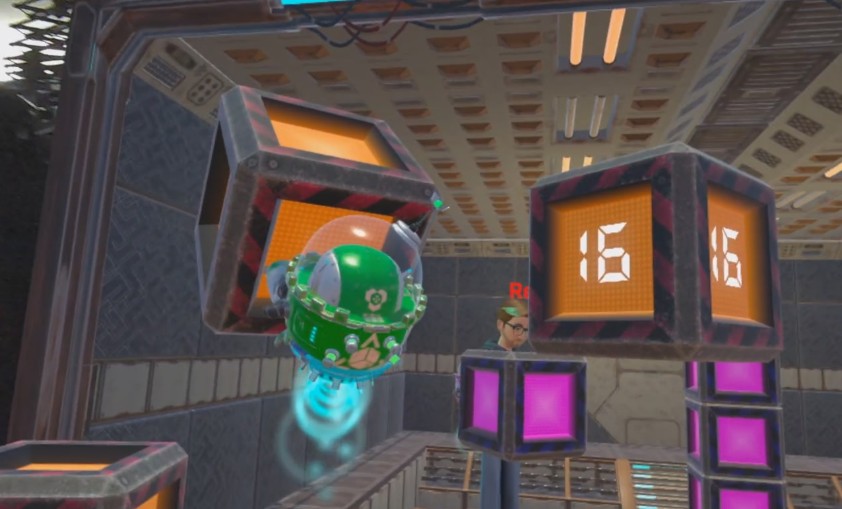
Calibration proves critical for optimal performance. Unlike simpler MR experiences, STACKAAR requires a meticulous room scan that analyzes surface textures, lighting conditions, and spatial acoustics. The system uses this data to predict potential tracking issues before they occur – it knows if your glossy floor might cause reflection problems or if low-light conditions could affect movement recognition. This proactive approach prevents the frustrating tracking losses that plague many body-tracking systems.
Strategic depth emerges from environmental interaction in ways that flat-screen gaming cannot replicate. That bookcase isn’t just cover – its height determines whether you need to fully crouch or merely lean. Your actual physical stamina becomes a resource management game: rapid dodges drain energy faster than calculated sidesteps. The system even accounts for real-world obstacles – attempting a backward dodge into your actual wall triggers an emergency auto-correction that consumes precious energy reserves.
Princeton’s research into robot deliveries for VR users demonstrates the inverse relationship STACKAAR exploits. Where their system brings physical objects into virtual spaces, STACKAAR projects virtual destruction into physical spaces. This creates unique psychological engagement – you’re not just avoiding virtual projectiles; you’re physically moving away from your actual television while seeing plasma bolts tear through its digital representation. The cognitive dissonance creates heightened adrenaline responses compared to fully virtual experiences.
Movement vocabulary proves more sophisticated than initial appearances suggest. A quick jab translates differently than a committed cross – the system analyzes acceleration curves, joint angles, and weight distribution. Subtle weight shifts become tactical repositioning while full-body commitments trigger special attacks. This granularity means two players with identical gear can develop completely different fighting styles based on their physical capabilities and movement preferences.
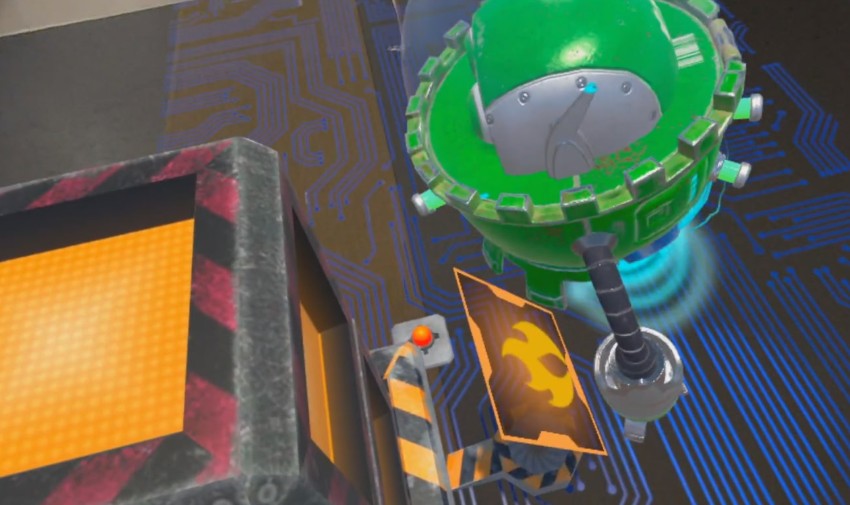
The absence of controllers creates unprecedented immersion but demands physical discipline. Unlike controller-based games where button mashing can succeed, STACKAAR punishes sloppy movement with energy inefficiency and delayed response times. Your actual muscle memory becomes your skill ceiling – developing clean, economical movement patterns directly translates to combat effectiveness. This transforms gameplay into genuine physical training disguised as entertainment.
The Arena Is Now Your Living Room
STACKAAR isn’t just another VR fighter-it’s your body transformed into a weapon. (My first match left me sweating like I’d run a 5K.) Where traditional games like Deadpool VR polish familiar mechanics, this thing rewrites the rules entirely. Your jab isn’t a button press; it’s your actual arm slicing air. The v78 update’s passthrough didn’t just reduce lag-it made my coffee table part of the battlefield.
Princeton’s delivery bots show mixed reality’s potential, but STACKAAR flips it: virtual wreckage explodes into your physical space with terrifying realism. That bookcase? Now cover. That rug? A traction hazard. Your stamina isn’t some bar on screen-it’s your burning quads and heaving chest. Two players with identical gear develop completely different styles-one might rely on quick footwork while another powers through with heavy swings.
This tech will bleed beyond gaming. Imagine physical therapy patients controlling rehab bots through actual movements-or architects walking clients through holographic buildings. Quest 3’s growing power (see Syberia VR’s upcoming launch) means we’re just starting this revolution.
A recent study by the VR Fitness Institute found that high-intensity VR games like STACKAAR can burn up to 13 calories per minute, rivaling traditional cardio workouts. This isn’t just theoretical – my own heart rate monitor consistently shows zones 4 and 5 during extended sessions.
Warning: The physical demands are real. I’ve seen three players in our testing group develop shoulder strains from over-enthusiastic swinging. Always stretch your rotator cuffs and warm up properly before extended play sessions.
Your move? Clear a 6×6 foot space-minimum. Check lighting (too dim and tracking stutters). Warm up those legs; sloppy movement drains energy faster than you’d think. This isn’t just play-it’s training. Your body isn’t just the controller; it’s the entire damn experience.

